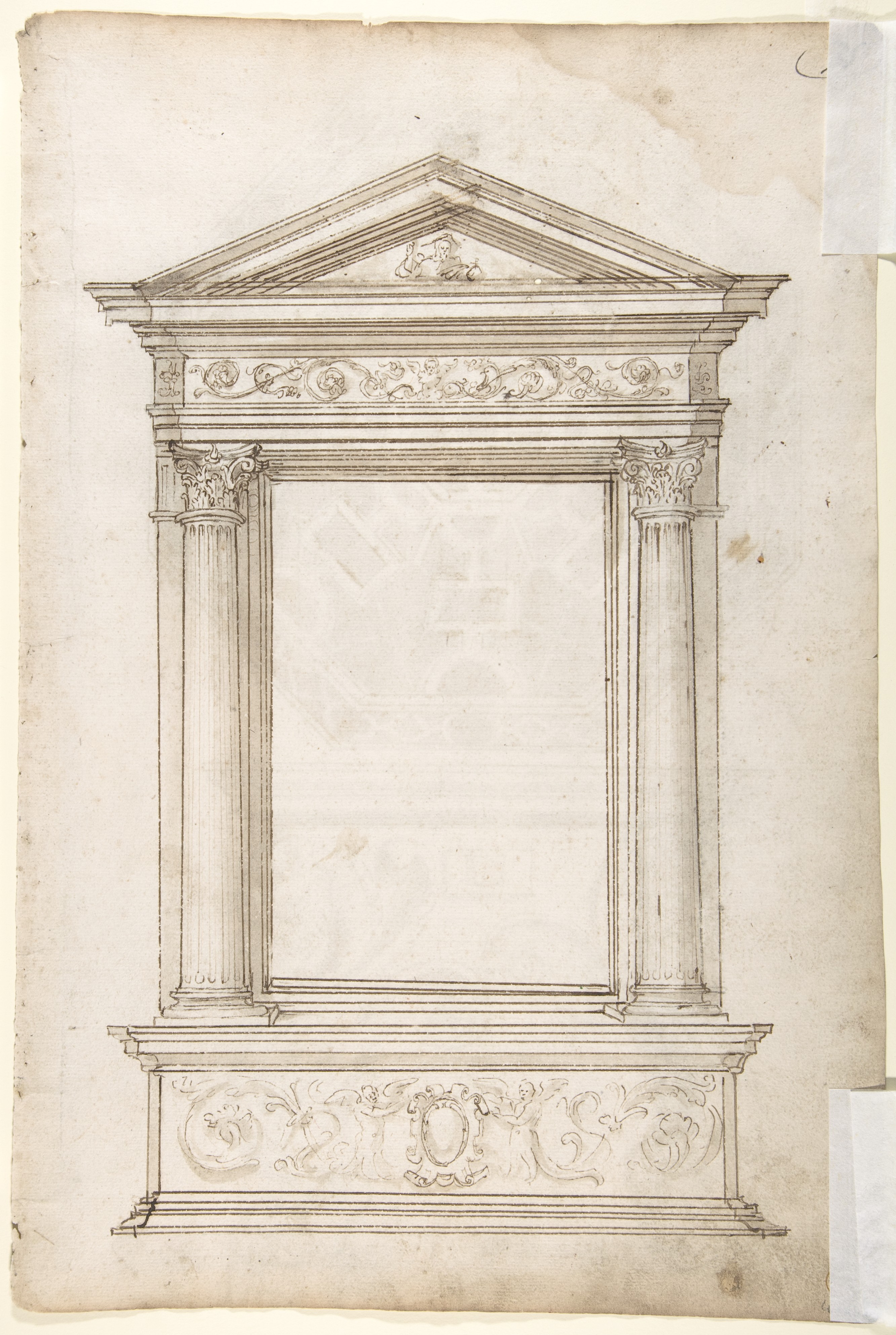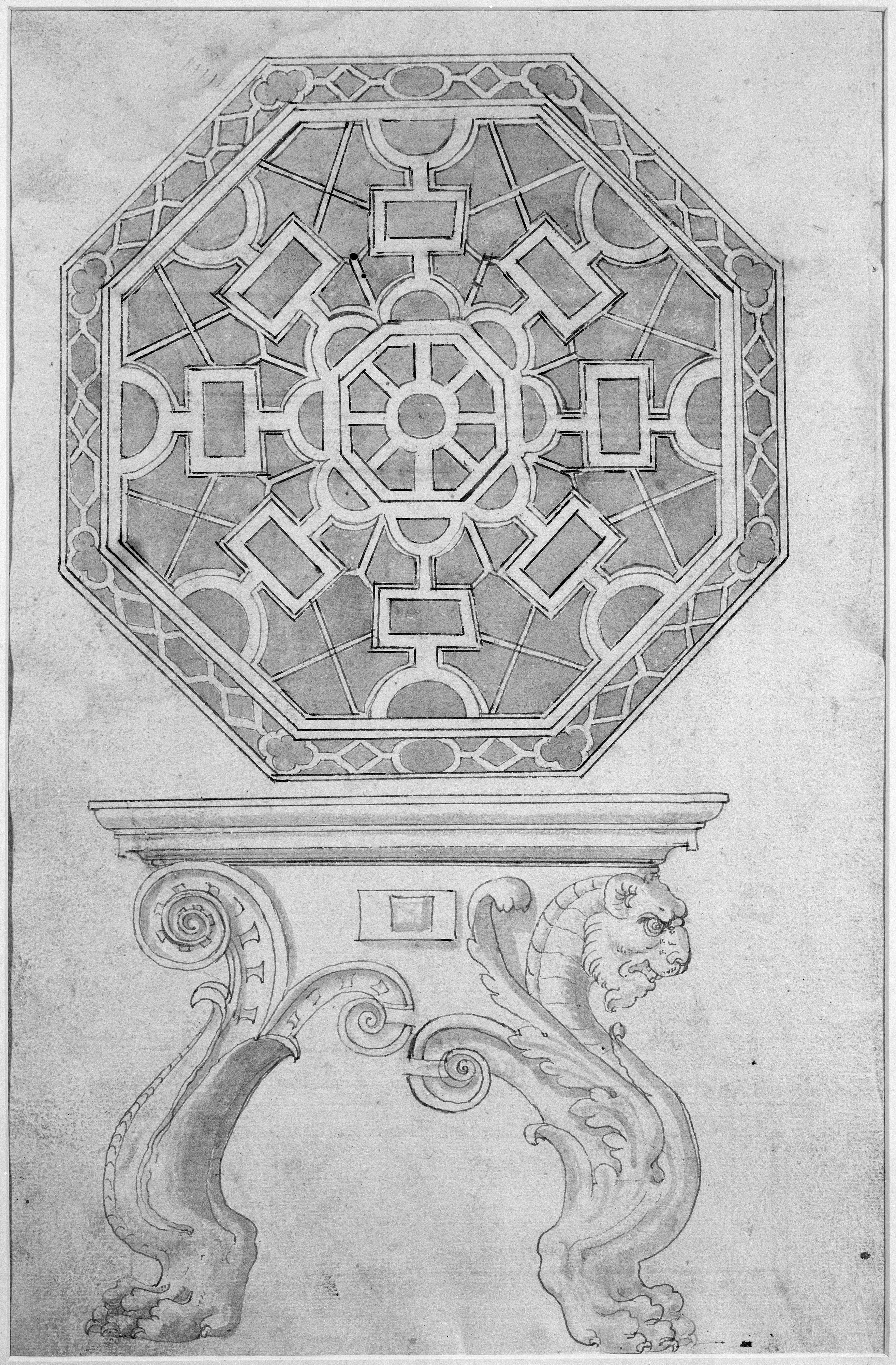Design for an Octagonal Table and Top (Recto); Design for altar or tomb monument (Verso)
Anonymous, Italian, 16th century Italian
Not on view
This drawing comes from an album with designs by or for an Italian cabinet maker. It shows a design for an octagonal table with two variants for its base. A client would choose either the left or right table leg, which would then most likely be tripled to form a triangular base. The octagonal entablature, shown from above, was meant to be decorated in a geometrical intarsia pattern for which different wood species would be used. In some cases, the top would even be reversible and have decorations on both sides. Tables like this one were meant as display pieces and had a (semi-) permanent location within the interior. Lighter folding tables were also in use which could be carried over to a particular location where it was of need at the time.
Due to rights restrictions, this image cannot be enlarged, viewed at full screen, or downloaded.
This artwork is meant to be viewed from right to left. Scroll left to view more.






